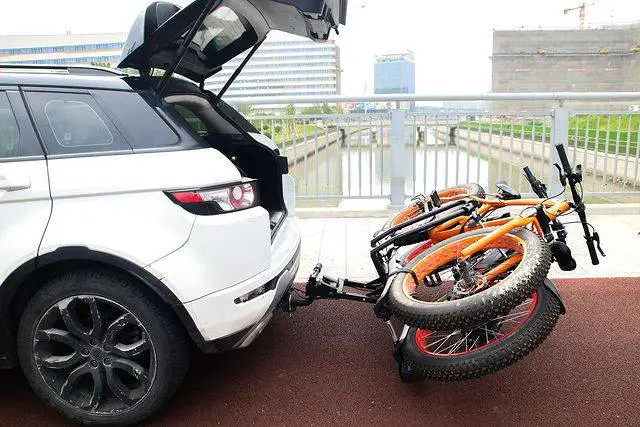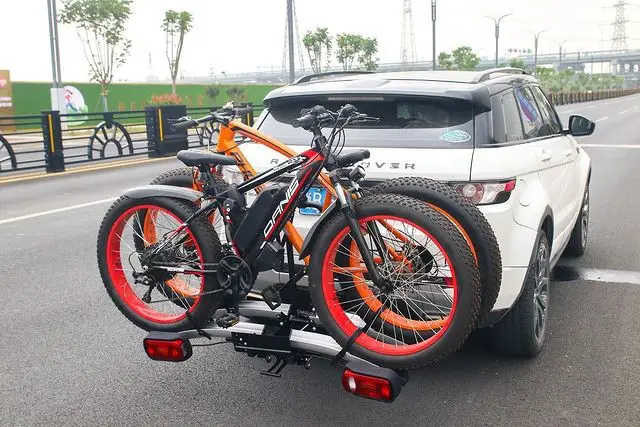To transport your electric trike, you can use a specialized car rack or a trailer hitch. For easy loading, consider a Trike Ramp that matches your trike’s size and weight. For long-distance travel, professional shipping services are a good bet. Choose wisely to keep your trike safe and secure during transit!
Transporting an electric trike can often seem like a daunting task due to their size and weight. Thankfully, with the help of a carrier trailer or ramp, this process becomes significantly simpler. This step-by-step guide will provide a general approach to using such tools to transport your trike, applicable to a range of brands and models.
Recommended Trailers For Transporting:
- Ultra-Tow Cargo Carrier with Ramp (Check Price on Amazon)
- Hollywood Racks Sport Rider (Check Price)
- Tow Tuff Cargo Carrier (Check Price on Amazon)
How to Transport an Electric Trike – Step by Step Guide

Step #1. Familiarize Yourself with Your Carrier Trailer/Ramp
Firstly, it’s essential to understand how your specific trailer or ramp works. Most carrier trailers/ramps are designed to accommodate different types of trikes, so take the time to learn about your equipment’s specific features and capabilities.
Step #2. Set Up Your Carrier Trailer/Ramp
Most ramps or trailers hook onto the back of your vehicle, but the exact setup will depend on your particular model. Always ensure you have enough clearance at the back of your vehicle for the carrier trailer or ramp. This includes space for the trike and enough ground clearance to avoid bottoming out.
Step #3. Adjust Your Trailer/Ramp Height
Depending on your vehicle and the design of your carrier, you may need to adjust its height. If the carrier is too low, it could scrape against the ground when driving. Height-adjustable models are beneficial, or consider using an adapter if necessary.
Step #4. Secure Your Trailer/Ramp
To prevent any movement or theft, ensure your trailer or ramp is securely attached to your vehicle. Many models come with locking mechanisms or recommend the use of hitch pins for secure attachment. It’s a small step that can offer a lot of peace of mind.
Step #5. Load Your Trike onto the Trailer/Ramp
The primary purpose of a carrier trailer or ramp is to simplify the loading process. Once set up, gently roll your trike onto the ramp or into the trailer, eliminating the need for lifting. Be aware of any load limit restrictions for your specific carrier.
Step #6. Position and Secure Your Trike
With the trike on the ramp or in the trailer, it’s time to secure it in place. Many models offer adjustable features to accommodate different trike sizes, so make sure your trike is centered and secure. Use any included straps, stops, or other securing mechanisms your carrier provides to ensure your trike won’t move during transport.
Step #7. Double-Check Your Setup
Before setting off, double-check your setup. Ensure the trike is secure, all locks or hitch pins are in place, and the carrier is correctly and firmly attached to your vehicle. If your carrier comes with safety lights or reflectors, ensure they are visible and functioning.
With these steps, you’re now ready to transport your trike with ease. Whether you’re heading out for a ride in the park or embarking on a long-distance trip, these guidelines will ensure a safe and convenient transportation process for your electric trike.
Key Considerations Before Buying A Cargo Trailer Or Ramp For Trikes
- Compatibility: Ensure the trailer or ramp is compatible with the size and model of your trike.
- Vehicle Match: Check if the trailer or ramp can be attached securely to your specific vehicle.
- Weight Capacity: The carrier should be able to handle the weight of your trike.
- Adjustability: A good carrier allows for adjustments to secure different trike sizes properly.
- Ease of Use: Consider how easy it is to load and unload your trike from the carrier.
- Height Adjustment: Look for carriers with adjustable heights to avoid ground contact while driving.
- Security: Prioritize carriers with secure locking mechanisms to prevent theft or loss during transport.
- Build Quality: Consider the materials and construction quality of the carrier. It should be sturdy and durable.
- Safety Features: Features like safety lights, reflectors, or anti-wobble mechanisms can enhance safety during transit.
- Storage: Consider whether the carrier can be easily disassembled or folded for storage when not in use.
- Price: Balance your budget with the necessary features and quality of the carrier.
Remember, the goal is to find a carrier that is safe, reliable, and matches your specific needs.
As an Amazon Associate, I earn from qualifying purchases, at no additional cost to you. Read Our Affiliate Disclosure.


Для наглядности представлена таблица с основными направлениями терапии и их эффектами:
Детальнее – [url=https://narkologicheskaya-klinika-v-krasnodare16.ru/]наркологическая клиника стационар в краснодаре[/url]
Основные этапы включают:
Получить дополнительные сведения – http://narkologicheskaya-klinika-v-krasnodare16.ru/anonimnaya-narkologicheskaya-klinika-krasnodar/